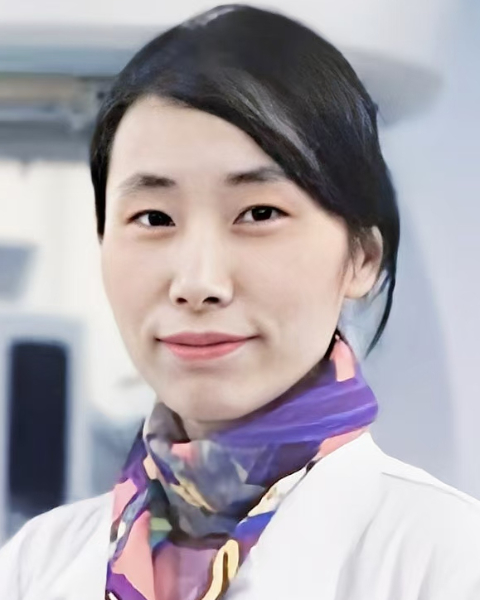PQA 02 - PQA 02 Physics Poster Q&A
2380 - Validation of Monte Carlo Calculation on Skin Dose in HDR Brachytherapy for Keloid with PHITS
Sunday, September 29, 2024
4:45 PM - 6:00 PM ET
Location: Hall C
Screen: 28

Jie Ni, MD
The First Affiliated Hospital of Soochow University
Soochow, Jiangsu
Presenter(s)
J. Ni1, W. Zhang2, X. Xu3, and S. Qin3; 1Department of Radiation Oncology, The First Affiliated Hospital of Soochow University, Suzhou, China, 2State Key Laboratory of Radiation Medicine and Protection, School of Radiation Medicine and Protection, Soochow University, Suzhou, China, 3Department of Radiation Oncology, The First Affiliated Hospital of Soochow University, Suzhou, Jiangsu, China
Purpose/Objective(s): Dosimetric uncertainties of skin calculated by TPS should be considered when high-dose-rate brachytherapy is applied to the treatment of keloids, due to insufficient scattering conditions in the air. This study aims to quantitatively investigate the magnitude and influencing factors. Materials/
Methods: The PHITS software V3.32 was applied to model Ir-192 HDR brachytherapy source. The validation of the model was verified by comparing the calculated parameters with published data. Solid water and Freiburg Flap (FF) applicators were used to simulate irradiation conditions in keloid treatment. A prescription dose of 5Gy/f was set in the Oncentra planning system (TG-43 algorithm), normalized to a depth of 5mm below the skin. Both a homogeneous phantom model (similar to TG-43 calculation model) and an air model were established in PHITS. The air model included the FF applicators, which were placed closely against the solid water surface, with air fulfilled on the other side, which was similar to irradiation conditions. The differences in skin doses between the two models were calculated under both planar and curved conditions. Different source lengths (ranging from 2cm to 16cm with a step size of 2cm) were set to simulate keloids of different sizes, thereby studying the relationship between dose differences and keloid size.
Results: The differences in g(r) calculated in PHITS were within 0.1%, and the differences in F(r,?) were within 5% except for 10° and 170°. The differences between the calculations using the homogeneous phantom model and the air model were within 3% under planar conditions, with the maximum difference occurring at the skin surface and decreasing with increasing depth. The smaller the target area, the lager the dose differences, mainly occurring at the edge of the target area. Differences were more significant in curved conditions, with increased surface curvature. The maximum difference was 8.7%. The differences between the doses measured using EBT3 films and the calculated results were less than 4.7%.
Conclusion: PHITS software can accurately model the Ir-192 brachytherapy source. Skin dose tends to overestimate irradiated dose when using the FF applicator for brachytherapy treatment of keloids. Especially in the case of small target area and large surface curvature. The trends in the EBT3 film measurement results were consistent with the calculated results. This study provides a dose reference for predicting the effectiveness of radiotherapy and preventing adverse reactions in clinical treatment.
Purpose/Objective(s): Dosimetric uncertainties of skin calculated by TPS should be considered when high-dose-rate brachytherapy is applied to the treatment of keloids, due to insufficient scattering conditions in the air. This study aims to quantitatively investigate the magnitude and influencing factors. Materials/
Methods: The PHITS software V3.32 was applied to model Ir-192 HDR brachytherapy source. The validation of the model was verified by comparing the calculated parameters with published data. Solid water and Freiburg Flap (FF) applicators were used to simulate irradiation conditions in keloid treatment. A prescription dose of 5Gy/f was set in the Oncentra planning system (TG-43 algorithm), normalized to a depth of 5mm below the skin. Both a homogeneous phantom model (similar to TG-43 calculation model) and an air model were established in PHITS. The air model included the FF applicators, which were placed closely against the solid water surface, with air fulfilled on the other side, which was similar to irradiation conditions. The differences in skin doses between the two models were calculated under both planar and curved conditions. Different source lengths (ranging from 2cm to 16cm with a step size of 2cm) were set to simulate keloids of different sizes, thereby studying the relationship between dose differences and keloid size.
Results: The differences in g(r) calculated in PHITS were within 0.1%, and the differences in F(r,?) were within 5% except for 10° and 170°. The differences between the calculations using the homogeneous phantom model and the air model were within 3% under planar conditions, with the maximum difference occurring at the skin surface and decreasing with increasing depth. The smaller the target area, the lager the dose differences, mainly occurring at the edge of the target area. Differences were more significant in curved conditions, with increased surface curvature. The maximum difference was 8.7%. The differences between the doses measured using EBT3 films and the calculated results were less than 4.7%.
Conclusion: PHITS software can accurately model the Ir-192 brachytherapy source. Skin dose tends to overestimate irradiated dose when using the FF applicator for brachytherapy treatment of keloids. Especially in the case of small target area and large surface curvature. The trends in the EBT3 film measurement results were consistent with the calculated results. This study provides a dose reference for predicting the effectiveness of radiotherapy and preventing adverse reactions in clinical treatment.
